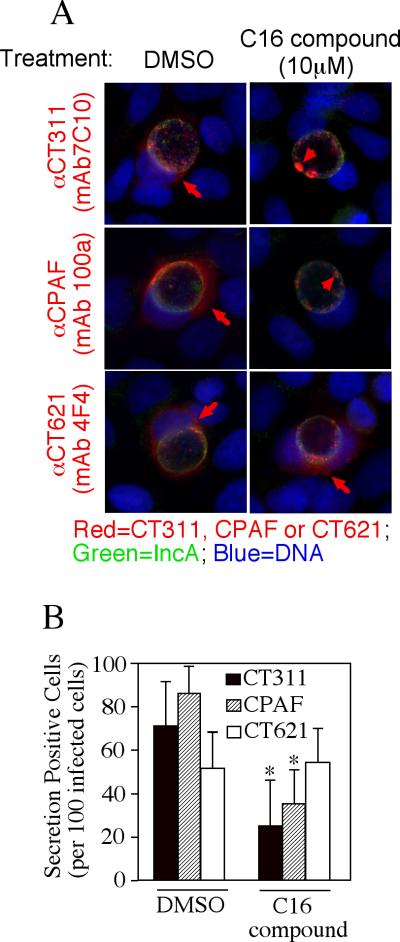Fig.6.
Inhibition of CT311 secretion in Chlamydia by a signal peptidase I inhibitor. (A) Hela cells infected with C.trachomatis were treated with DMSO or 10mM C16 compound at 6 hours post infection and processed for immunofluorescence microscopy analysis 30 hours after treatment. The mouse monoclonal antibody (mAb 7C10) against CT311, CT621 (mAb 4F4) or CPAF (mAb 100a) was respectively co-stained with a rabbit anti-IncA antibody (green) and the DNA dye Hoechst (blue). Red arrows indicate proteins secreted outside of the inclusions while arrowheads indicate proteins still inside the inclusions. (B) The secretion-positive cells were quantitated by counting 100 infected cells randomly from each coverslip and expressed as % of total infected cells. The data presented came from 3 independent experiments with duplicate coverslips in each experiment. Note that both CT311 and CPAF but not CT621 secretion-positive cells were significantly reduced after C16 treatment (*P<0.05, two-tailed Student t-test).

